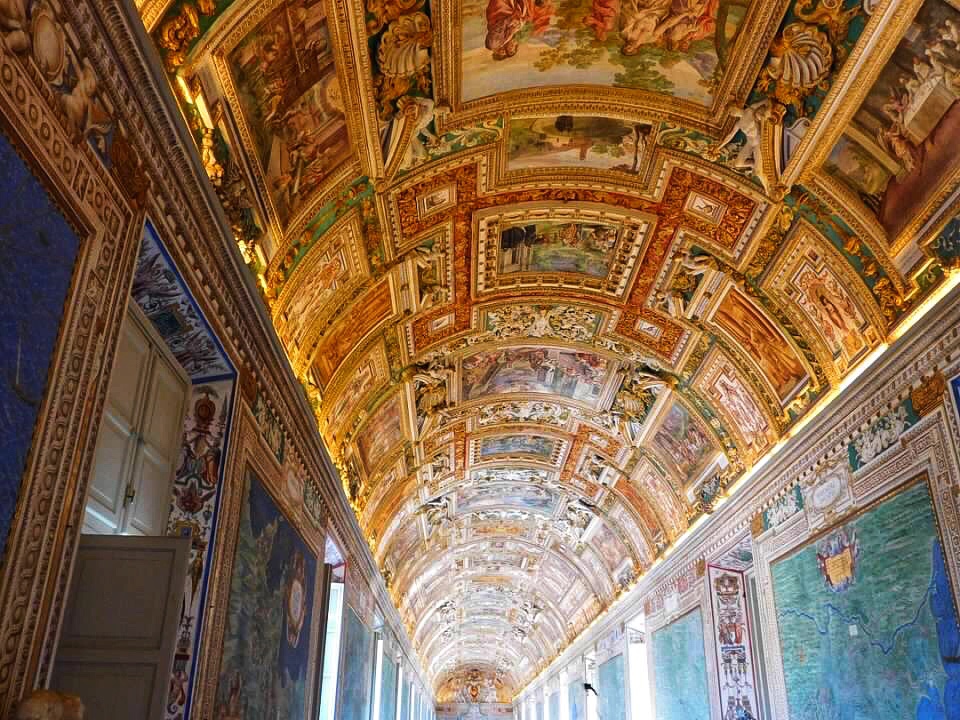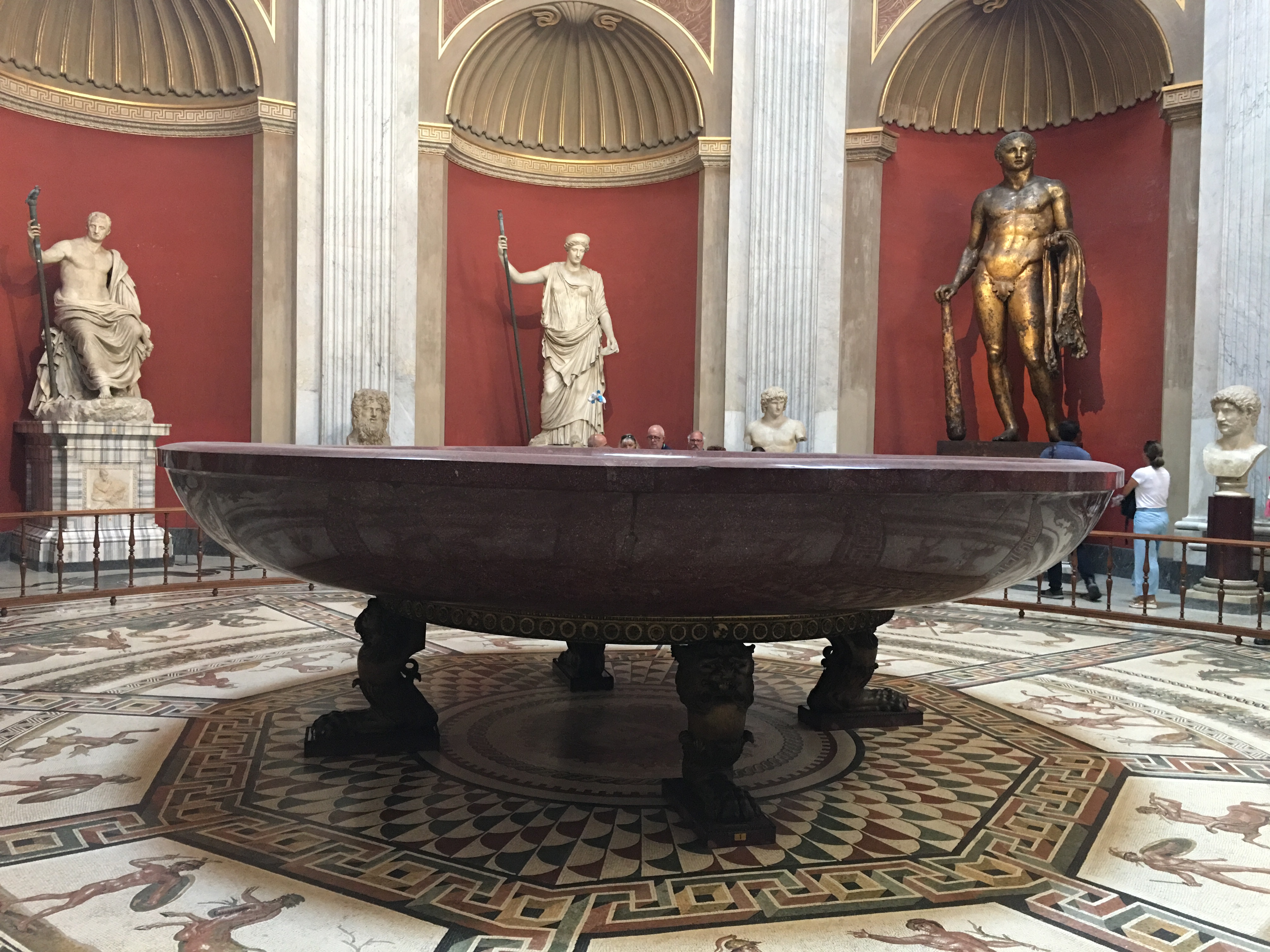Vatican Museums
Whatever your religion, a trip to Rome is not complete without a visit to the Vatican. Established in 1506 the Vatican Museums include an amazing group of collections, 70,000 works in total, assembled by numerous popes. Mercifully, only 20,000 works are currently on display. I can only scratch the surface in mentioning the Papal Carriage Pavilion, the Museo Pio Clementino, the Gallery of Maps, the Sistine Chapel and, of course, St. Peter’s Basilica and Square.
The Papal Carriage Pavilion
Like any museum on this vast scale, it’s important to take it in small bits especially with children. Start with the Papal Carriage Pavilion. It’s interesting for kids and, on hot summer day, it’s cool since it’s underground.
If you want to really avoid the crowds and dive deeply into the collections you need to visit in the winter and shoulder seasons. If you cannot, then at least start early in the day.

The Papal Carriage Pavilion not only includes splendid carriages from past centuries but more modern means of transportation. The original “Pope- mobile” or Jeep in which Pope John Paul II was shot is on display as is an assortment of Mercedes limousines.


The Gallery of Maps
Upon exiting the lower level Papal Carriage Pavilion, you ascend the “modern” (circa 1932) Bramante Staircase and arrive at the Gallery of Maps or Galleria Delle Carte Geografiche. Pope Gregory XIII commissioned Ignazio Danti in 1580 to paint the 40 panels. The panels map the entire Italian peninsula with amazing accuracy.

Museo Pio Clementino
The Vatican collection contains a seemingly endless assortment of antiquities and sculptures. Below is the Sala Rotonda or Round Room and its 43 foot centerpiece, Nero’s bathtub, which dates from 64 A.D. and is made of Red porphyry, a very rare stone. The statute of Hercules on the right is the largest and only statue cast in bronze in the room. It was struck by lighting during Roman times and therefore deemed bad luck. It was buried and not found until 1864. The seated figure to the left is the Emperor Galba who ruled for only seven years. He fell afoul of the Emperor’s personal guard and was murdered. The Emperor Claudius, who succeeded the infamous Emperor Caligula, is depicted in the middle statue. He was well regarded and brought Britain into the Roman Empire.


Sistine Chapel
After winding through a labyrinth of corridors you end up in the Sistine Chapel which is named after Pope Sixtus IV who commissioned its restoration between 1473 and 1481. Michelangelo’s famous depiction of the Last Supper was painted between 1535 and 1541 for Pope Alexander III. It’s a far more intimate space in real person. Speaking is discouraged to prevent the release of excessive carbon dioxide and because, of course, it is a sacred space. In normal times up to 20,000 people reportedly visit the Chapel every day. Women need to cover their heads and shoulders. We purchased scarves for just a few euros before entering the Museum. No photos in the Chapel are allowed.

St. Peter’s Basilica
Upon leaving the Sistine Chapel we made are way to the Basilica via the Scala Regia or Royal Staircase which is part of the formal entrance to the Vatican. In his restoration of the staircase, Gian Lorenzo Bernini exaggerated the distance to create a more dramatic effect. On route we passed a pair of the famous Swiss Guards in their flamboyant uniforms designed by Michelangelo.

Once inside St. Peter’s Basilica be prepared to be overwhelmed and, of course, for large crowds. To the right is Michelangelo’s famous Pieta or “The Pity” from 1499 behind a wall of bulletproof glass. In front lies the alter under a canopy of bronze by Bernini. To the left is the entrance to the Treasury Museum which contains the gem encrusted Papal tiaras.

St. Peter’s Square
Step out of the Basilica onto one of Europe’s greatest squares. In front lie the embracing Doric colonnades which Bernini executed for Pope Alexander VII from 1656 to 1667. On your left is the Apostolic Palace where the popes resided in the Papal Apartments until Pope Francis was elected. Pope Francis choses to live more simply in the Domus Sanctae Marthae which is a hotel/residence within Vatican City.

In front of St. Peter’s Basilica is the famous balcony on which the newly elected Pope appears for the first time.


